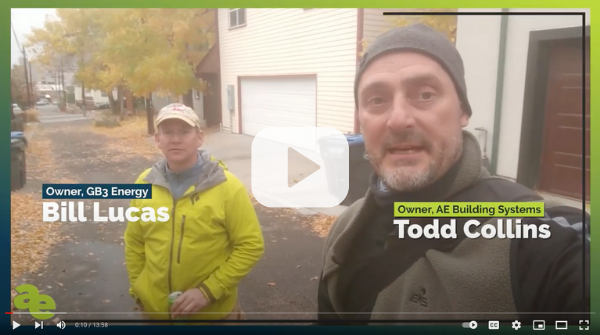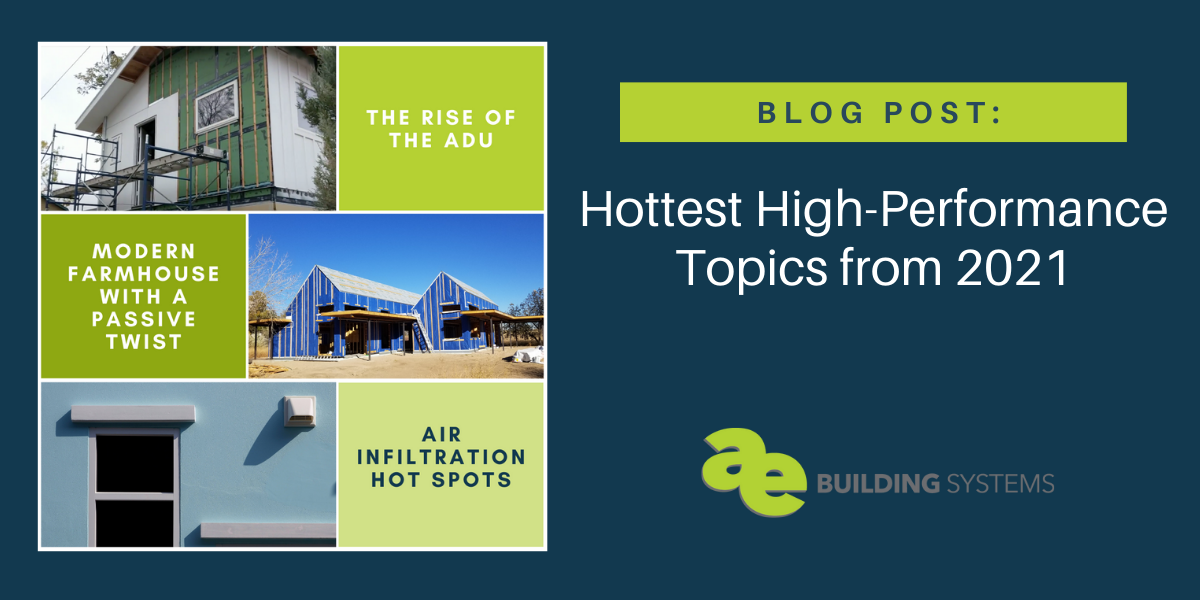A quick reflection on high-performance principles discussed in 2021.
Because we are data nerds and love looking at performance (normally energy efficiency), but in this case, we wanted to see which AE blog post topics resonated most in 2021. Below is what Google Analytics told us our top three posts are.
Here’s what this tells us, there is an increased awareness for Passive House Practices even when building an ADU, people want to invest in a sustainable, lasting home, and the building envelope is getting its due time in the spotlight. This has us quite excited and eager to see what 2022 has in store.
1. The Rise of the ADU: Increased popularity AND energy efficiency
Call it a Granny Flat, a Mother-in-Law Suite, a She Shed, a Man Cave, or whatever you want, an Accessory Dwelling Unit (ADU) has become the BIG THING in residential architecture today. ADUs have become a popular feature in homes from city neighborhoods to rural properties, and they make a lot of sense when you dig into the benefits. What we’re seeing, though, is that people not only want to build these additional living spaces on their property, but they want to build it in an efficient manner so that it works for them in the long term.
What is an ADU?
An ADU is an additional living space added to a property, containing all the essential functions of a normal house. They are a solution to the need for affordable housing, population density, and multi-generational living solutions. As the need and interest has grown, many local governments are passing new laws and regulations, allowing for more homeowners to build and rent ADUs. Read the full post and see the video tour!

2. Modern Farmhouse With a Passive Twist: Profile on Greg Fisher’s Millhaus
Long before the modern farmhouse was a trendy term on HGTV, an architect had a vision for design that had a connection to nature, history, sustainability, and all-around innovative design. Greg Fisher, architect based in Fort Collins, Colorado, embraced the concept with his home/office, which has become known in the Passive House community as an example of innovative design with sustainability at heart.
The Millhaus
Millhaus is a Passive House project that combines Greg’s personal home, as well as an architectural office that was named for its history as a mill, and the nod to Passivhaus design. Built on the property of a former cherry mill, the 3200 sq. ft. structure became a collaboration between traditional, gabled design, modern aesthetics, and Passive House principles. The house marries traditional materials native to the original structures of the mill with more modern materials like steel. Greg’s project truly personifies his belief that “aesthetics can be part of Passive House.” Read the full post and check out the products selected!
3. Passive House Air Infiltration Hot Spots
Building a sustainable building envelope is easy…until you add in openings. Wouldn’t it be nice to be able to make efficient building envelopes in a snap? But that’s not how life works. We need doors and windows and vents and openings in order for a building to function. So, alas, we have to deal with holes in the building envelope that complicate our lives, especially when we’re working to build with Passive House practices in mind. But with each hole we make in a building, we need to pay attention to ensure there is minimal air infiltration.
Why Should You Care?
Every hole in a building envelope is an area of extreme complexity. It becomes an area where you have to focus structural attention to ensure that it functions properly, but it also becomes a juncture for energy (heat) and air to escape. When it comes to Passive Home tactics, we care about this a lot because these junctures are usually where most of our inefficiencies come into play. Therefore, we need to make sure we pay special attention to these areas to ensure that we can maintain an efficient, effective structure. Read the full post for the top culprits!
The team at AE Building Systems sends out a monthly newsletter with Passive House and high-performance building insights—have you subscribed? We wish all of our clients, colleagues and industry friends a wonderful New Year; see you in 2022.


Leave a Reply